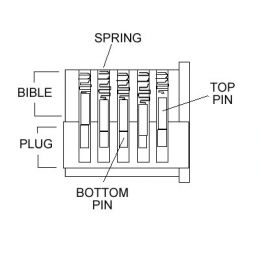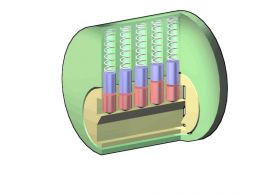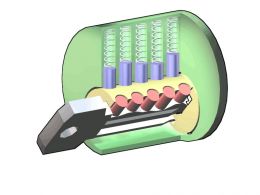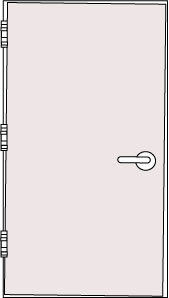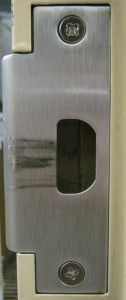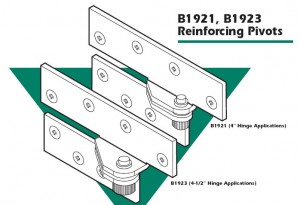Finding the Current Drop
As electric locking systems become increasingly complicated, troubleshooting these systems has also become more complex. Yet certain basic principles always apply.
Case in point, a customer had access control on a stairwell door using a fire rated mortise exit device with an electrified mortise lock. The solenoid in the mortise lock had burned out twice and the third one, newly installed, was already too hot to touch. Granted, a solenoid operated fail safe device used in a continuous duty application will get warm, but it should not get too hot to touch. So they called me to help them figure out what was going on.
To find the problem, I first listed the possibilities:
- They had gotten three defective solenoids in a row
- The power supplied is the wrong voltage – if the voltage was either too high or low, that would cause the solenoid to heat up
- The current supplied is inadequate – the solenoid used 330mA. If it were being supplied with only 150mA, for example, the solenoid would heat up.
We determined that 27 volts DC was available at the door to power the 24 volts DC solenoid – perfectly acceptable – and we all felt that it was rather unlikely that they had received three defective solenoids in a row. So that left current drop. Where was the current going? What was preventing it from getting the current it needed?
The access control tech on site could not determine whether the solenoid was getting enough current at the door by using a meter (for whatever reason) so we traced the current back through the line.
The power supply was a 6 amp, 24 volts DC power supply that had an output board with 8 fused outputs. If all were in use, then a max of 750mA should be available from each output, provided they all were carrying the same amperage load. We determined that four of the outputs were being used: three were used to power electric strikes at 300mA and one was used to power the electric mortise exit device at 330mA. The sum of the current draw for all devices attached to the power supply was therefore about 1.2 amps – well within the power supply’s capacity. Therefore the power supply size was not the problem. The technician measured the output from the contacts that were connected to the mortise lock and found that they were outputting correct voltage and current. Therefore the output board was not the problem.
Assured by the technician that the wire run between the power supply and the mortise lock was less than 100 feet and that 18 gauge wire was used, I knew that the wire run was not the problem. I asked how power got from the door frame through the door and into the mortise lock. The technician responded that power transfer was accomplished by use on an electric hinge.
Typical wire gauge in an electric hinge is 24 gauge – a thin wire to be sure, but since power only needs travel a few inches through it, hinge wire gauge is usually not a problem. But this electric hinge had its own 3-foot wire lead threaded through a raceway in the door to the mortise lock. Whereas a few inches of 24 gauge wire might not be a problem, I reasoned, three feet of it might be a problem. We talked about it briefly and then agreed that they would give it a try.
To my dismay, they called back two hours later – after they had replaced the wire running through the door with 18 gauge wire and let the mortise lock run on it for a while – and let me know that this did not work either.
The answer finally came when I asked how the electric mortise lock was connected to access control and was told there was a controller in a box above the door. The controller used a form C relay to turn the electric mortise lock on and off. I suggested that the technicians check the relay to make sure it was working properly. When they did they discovered that the electric mortise lock had been connected in series with another device. This other device – whatever it was – drew enough current to deprive the mortise lock of the current it needed to operate without burning up. Problem solved.
The moral of the story is that, yes, access control has only gotten more complex as time goes by, but by using simple, logical methods a good technician and figure out and repair most problems. So stick with it and keep asking questions until you ask the right one.
And good luck!
